Harley-Davidson XR1000
With Ian Falloon
Back in the early 1980s Harley-Davidson was struggling. In an era dominated by Japanese multi-cylinder engines with double overhead camshafts, 4-valve heads and liquid cooling Harley was still offering old-fashioned pushrod, two-valve, air-cooled V-twins.
Harley bought itself back from AMF in 1981 and immediately scrapped the revolutionary Nova V-four liquid-cooled prototype AMF had been developing. This left them without anything new in the pipeline so in the interim Willie G. Davidson suggested a hybrid performance model, basically a Sportster with a racing XR-based engine. With a combination of XLX Sportster and modified XR750 parts, the resulting XR1000 was theoretically an easy and inexpensive solution to Harley’s immediate dilemma.
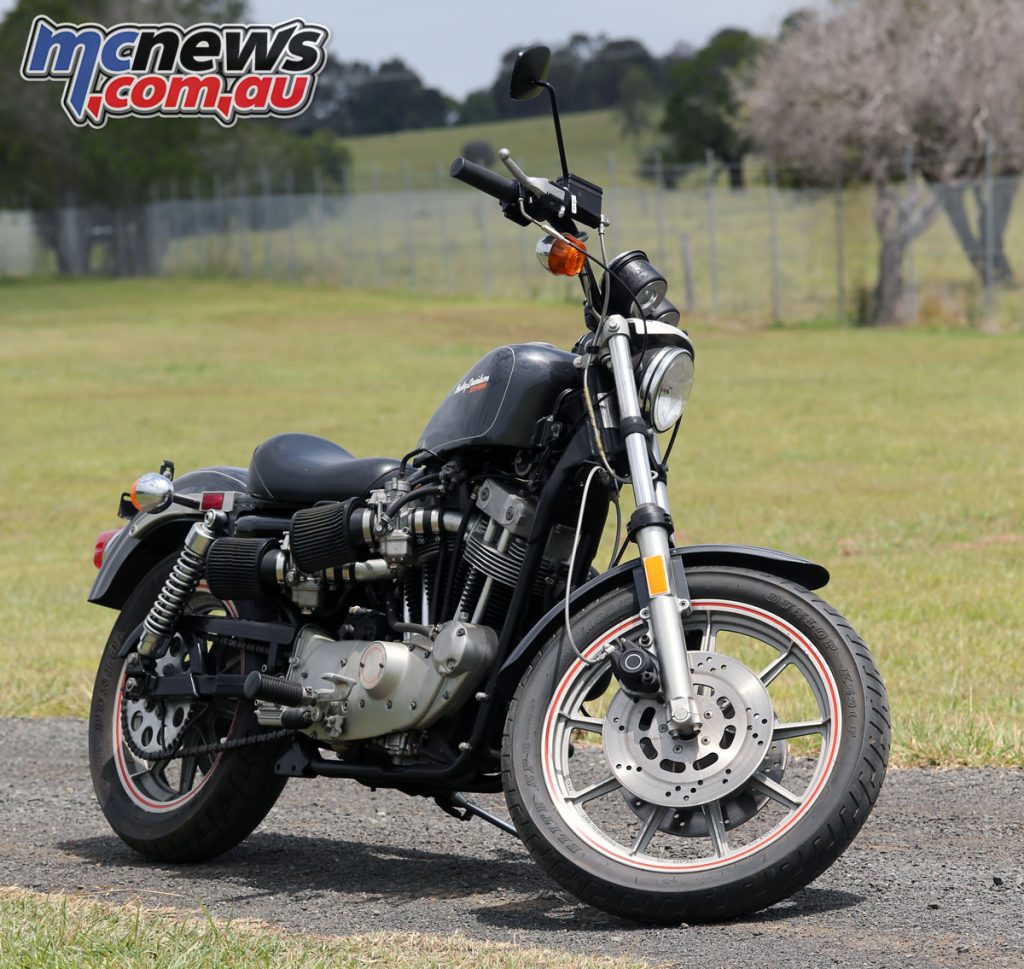
The XR1000 engine was built around a stock XLX Sportster bottom end, with special barrels and cylinder heads. As the enlarged XR750 aluminium cylinders were too small to fit the XLX cases, new 81mm iron cylinders were required, with new aluminium pistons and connecting rods.
These fork-and-blade con-rods (one rod riding inside the other on the crankshaft), bolted on to the XLX single-throw crankshaft, with four mild low-lift “Q” camshafts underneath the right side cover.
So the taller engine could fit the Sportster frame the new cylinders were 12.7mm shorter and featured improved through bolts to the cylinder head rather than the separate bolt arrangement of the standard XLX Sportster. They also included more finning to improve heat dissipation.
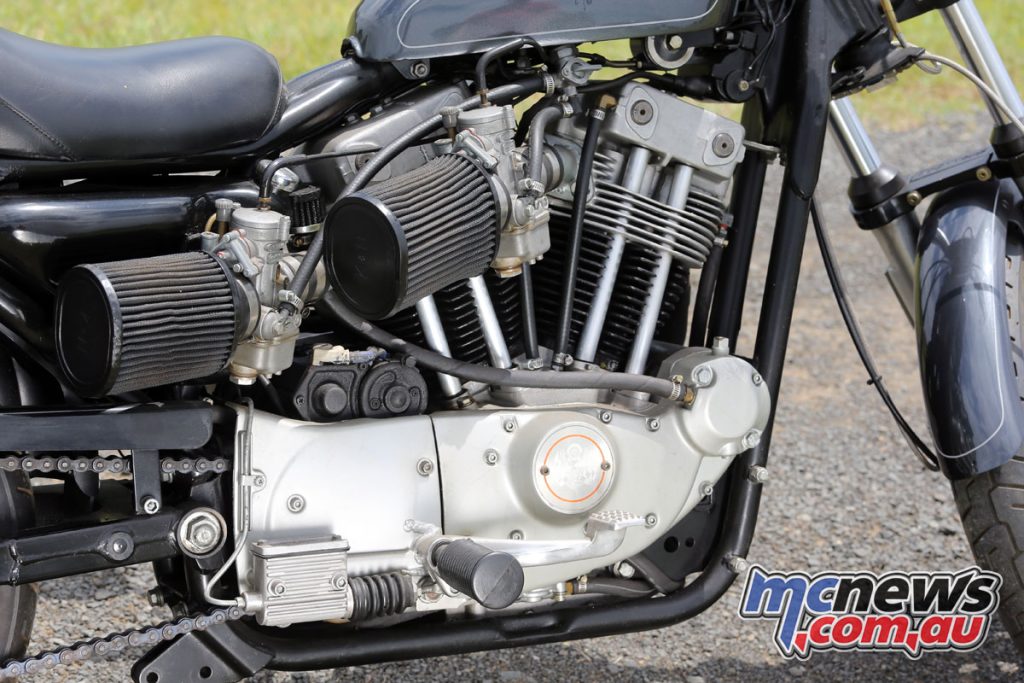
Dick O’Brien, famed head of H-D’s racing department, was given the job of developing the XR1000 engine. Instead of the XLX cast-iron cylinder heads with its wide 90-degree included valve angle the XR1000 cylinder heads were based on the XR750.
These were aluminium with a shallower 68-degree valve angle. This allowed for a shallower combustion chamber and a flat-topped piston, even with the 9:1 compression ratio. The XR1000 required new cylinder heads with slightly larger valves to allow for the increased 998cc displacement.
After basic machining in Milwaukee, the heads were sent to flow-guru Jerry Branch in California. Branch did the porting and polishing, shimmed the double valve springs, and put in titanium collars and keepers.
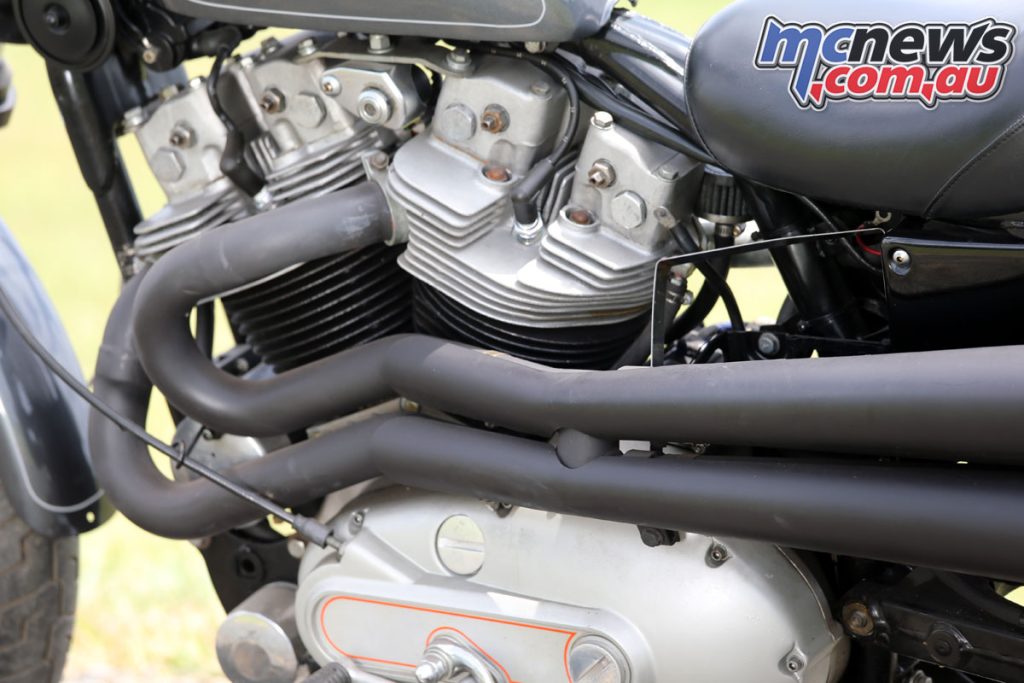
As on the XR750 the rear cylinder head was reversed. So instead of the usual central Keihin carburettor, carburetion was by a pair of 36 mm PHF Dell’Orto pumper carbs, both hanging out on the right side of the engine wearing large K&N air filters.
Also like the XR the exhaust pipes were on the left side of the engine, curving sharply back over the top of the primary case before concluding in a pair of megaphones. The power was up 10 horsepower over the XLX, to 70 horsepower at 5,600rpm.
This was transmitted through the usual triplex primary chain and multiplate wet clutch and a four-speed Sportster transmission. Considering the XR1000 was meant to be a street racer a fifth gear would have been a welcome addition but that was beyond the remit at the time.
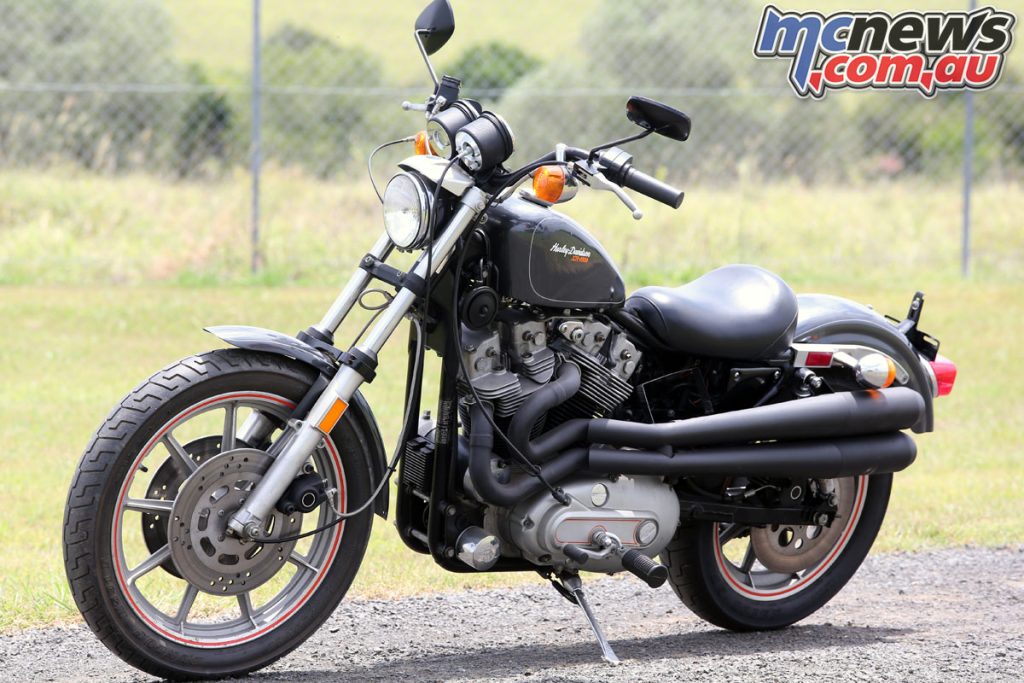
This engine was bolted into the XLX chassis. Introduced a year earlier, the XLX featured more modern looking welded steel tubes rather than the previous individual castings. But with the engine securely bolted in place, vibration was an issue from the unbalanced 45-degree V-twin.
The suspension was also very basic compared to other 1000 cc sports bikes; the Showa 35 mm front fork and pair of Showas rear shock absorbers both non-adjustable.
The steering was predictably slow with a stretched out 29.7-degree steering head, 114 mm of trail and a long 1,524 mm wheelbase. Dirt track origins were evident in choice of 19 and 16-inch wheels, although a more sporting 18-inch rear was available as an option.
The XR1000 was also the first Harley with a double disc front end, with 292 mm discs patterned after those on the factory XR750 racers. Although the brake calipers were only single piston, the brakes were the best yet for a Harley.
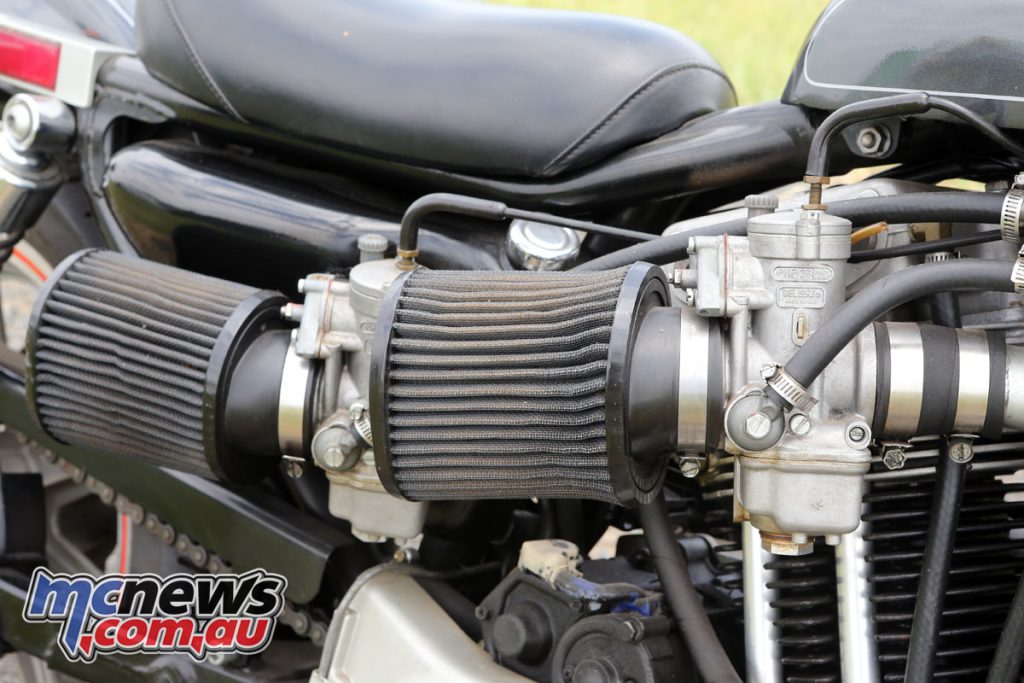
Not the most practical street bike, the XR1000 weighed a hefty 218 kg dry and the tiny 8.5 litre tank provided a bare 180 km range. The engine performance was strong, the XR1000 topping out around 200 km/h, but it was exceedingly uncomfortable.
Along with the spine jarring vibration the low seat height of 737 mm and forward mounted Sportster footpegs resulted in the carburettors and hot exhaust fouling the rider’s legs.
Only originally available in the US, the XR1000’s $7000 price tag turned out to be a major drawback. When a similar looking XLX Sportster went for $4,000 it simply didn’t seem good value.
The original nondescript grey colours were considered uninspiring but for its second year the XR1000 was painted in Harley’s traditional orange and black racing scheme. Harley built 1,000 XR1000s during 1983, but many remained unsold.
A further 700 XR1000s were built in 1984, but most were later discounted and the model discontinued. Harley also offered a racing kit with 10.5:1 pistons, hotter cams, 38 mm carbs and an unmuffled exhaust system providing an extra 20 horsepower.
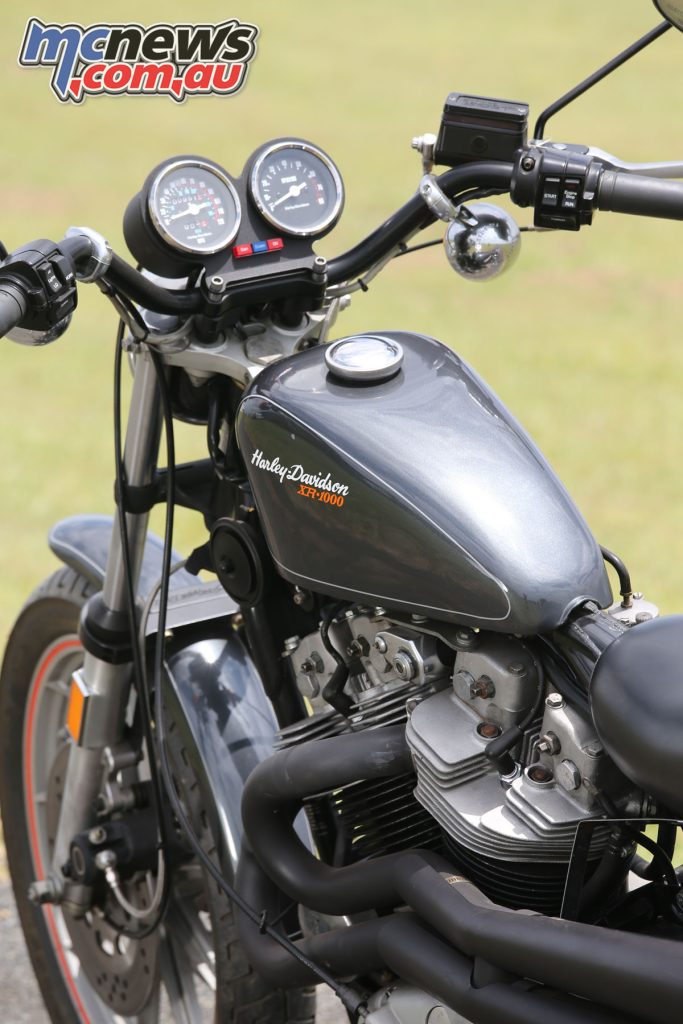
Raucous and unrefined, the XR1000 was an enigma. As a repli-racer, a production road bike created out of a dirt-track racer, it was functionally compromised. But the XR1000 was more than a sum of parts.
Part Jay Springsteen thundering through a dusty Indianapolis Mile turn and part the bulging bicep of a hot Sportster.
This was a motorcycle with a rippling pulse you could feel through your hands, feet, buttocks and heart. The XR1000 was unique and epitomised the visceral Harley-Davidson experience.
| Harley-Davidson XR1000 Specifications | |
| Engine | OHV 45-degree V-Twin |
| Bore & Stroke | 81 x 98.6 mm |
| Displacement | 998 cc |
| Compression Ratio | 9:01 |
| Horsepower | 71 hp @ 5600 rpm |
| Torque | 48 lb-ft @ 4400 rpm |
| Carburetion | Dual 36 mm Pumper Dell’Orto |
| Ignition | V-Fire CDI |
| Starting | Electric Only |
| Primary | Triplex Chain |
| Transmission | Four-Speed |
| Final Drive | Roller Chain |
| Wheels/Tires | 110/90×19in, 130/90×16in |
| Brakes | Triple Discs |
| Frame | Steel, Double Down Tube |
| Suspension | Telescopic Fork, Twin Shocks |
| Dry Weight | 228 kg |
| Top Speed | 185 km/h |























